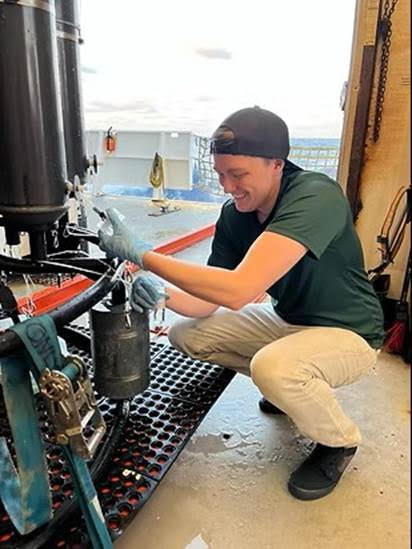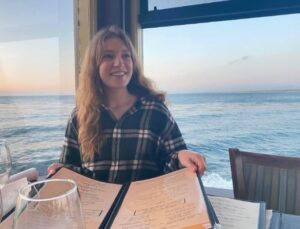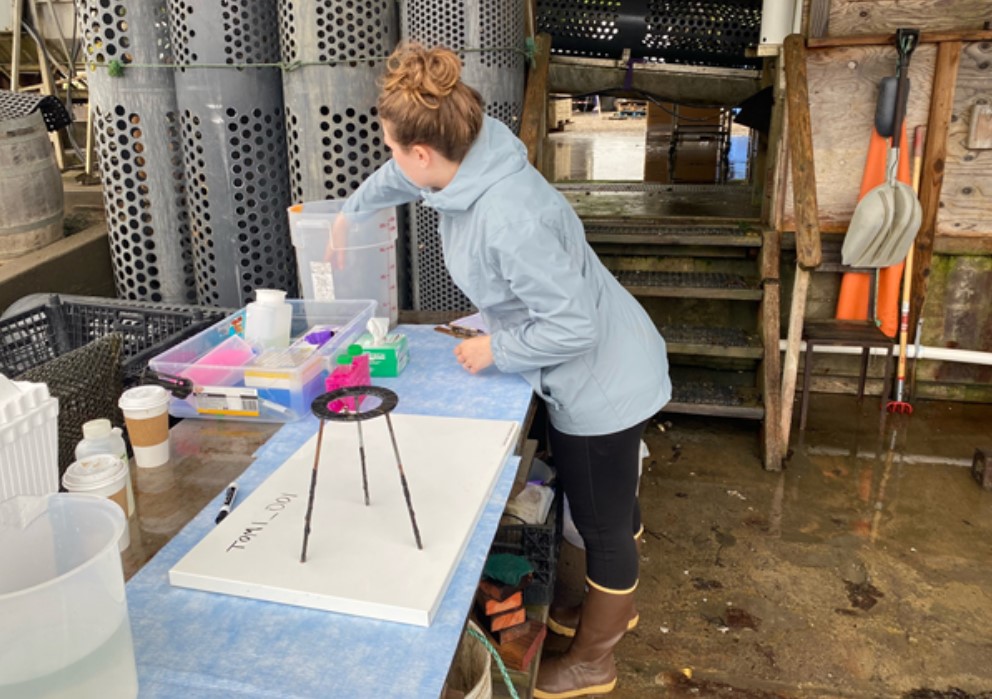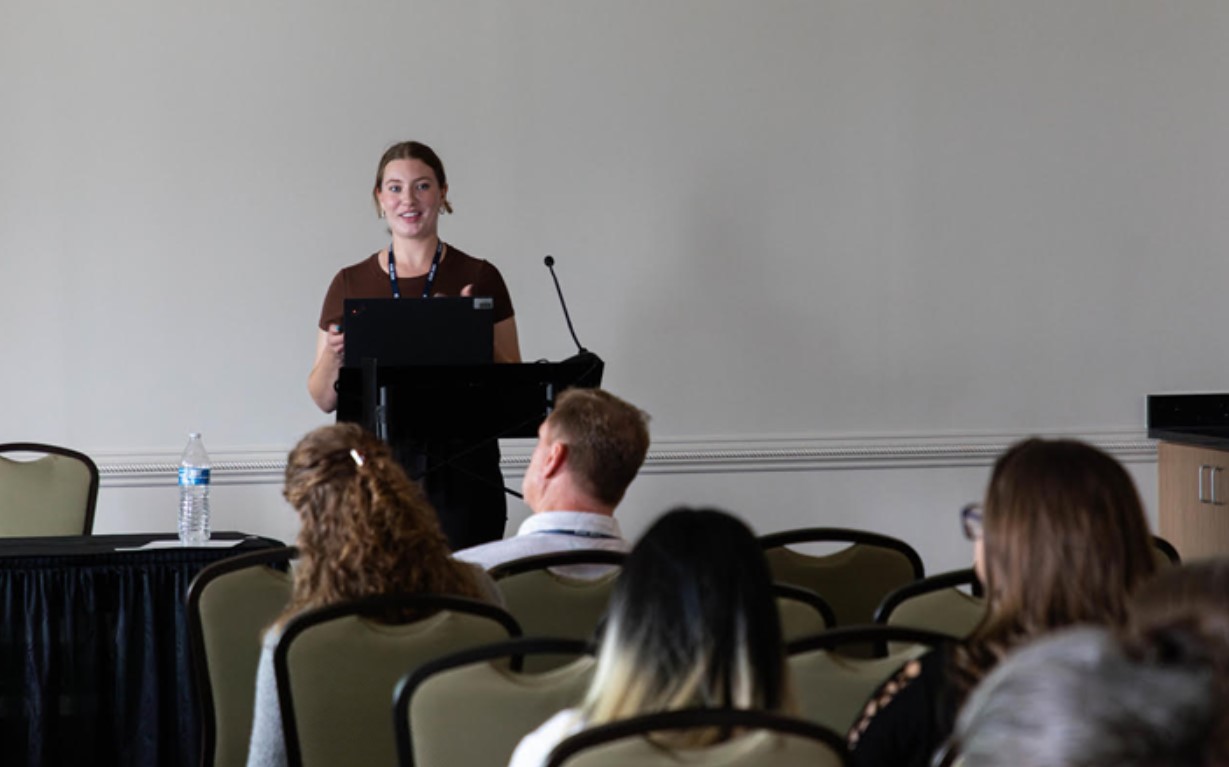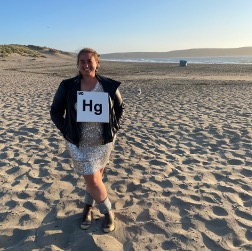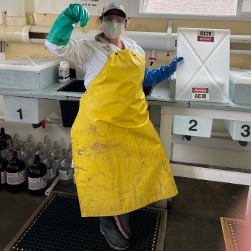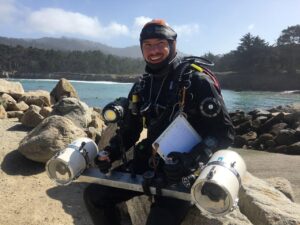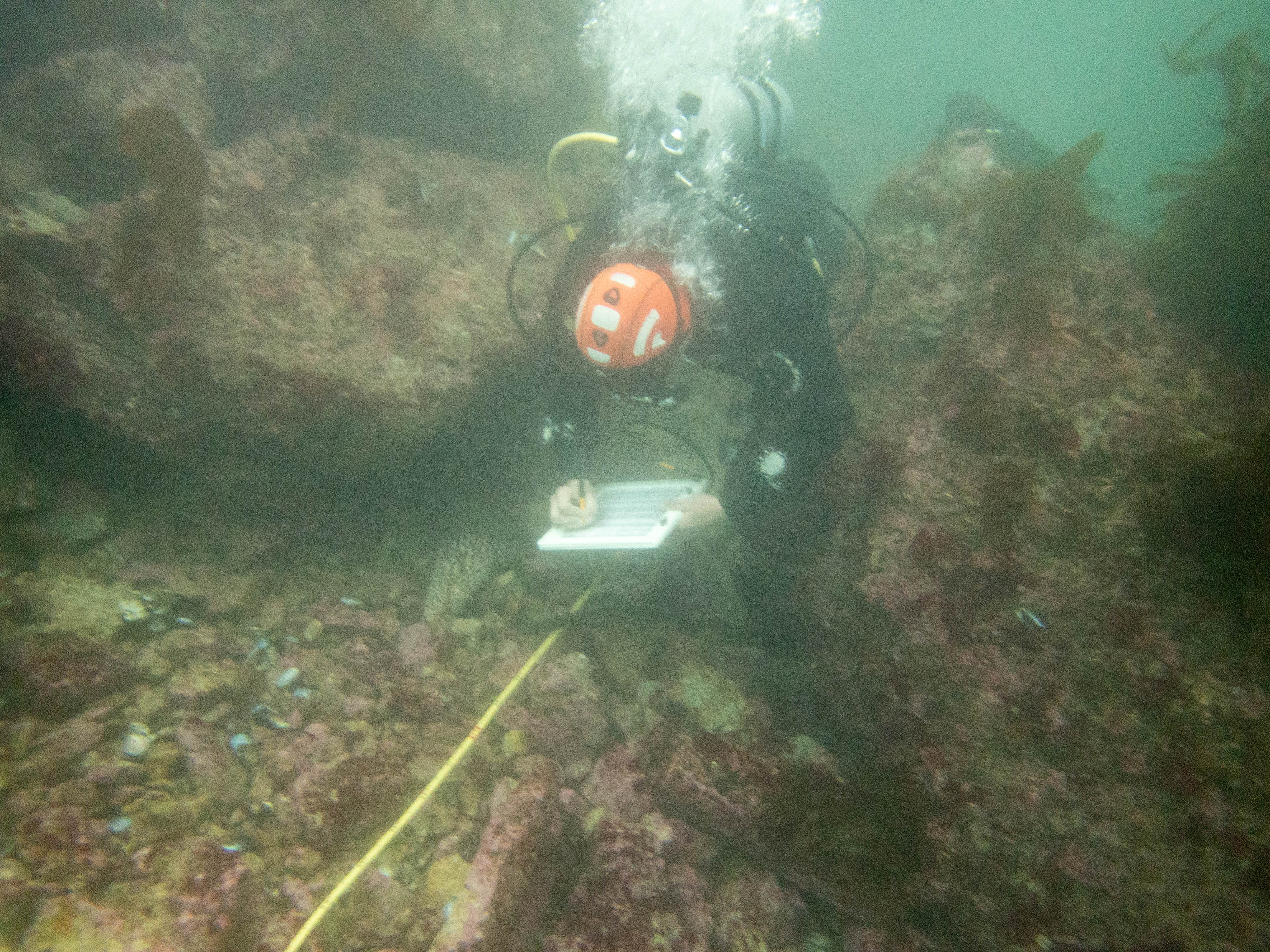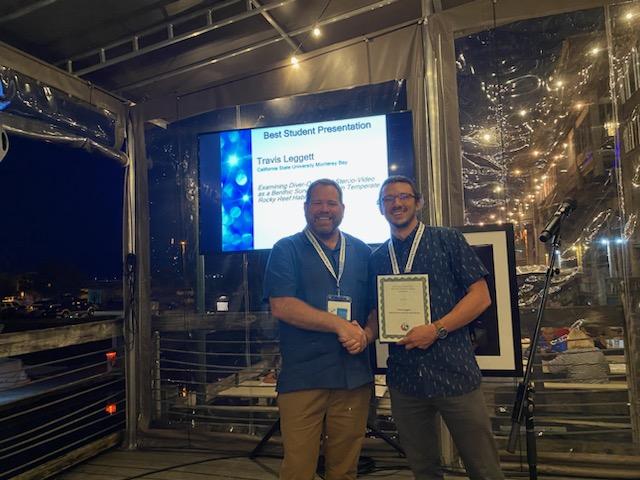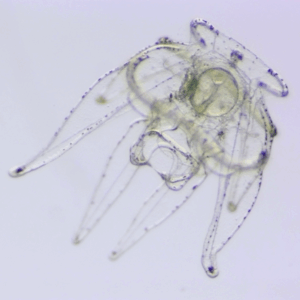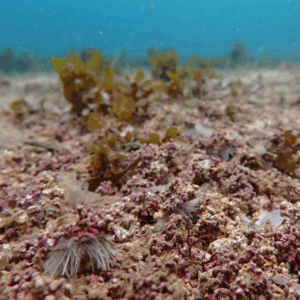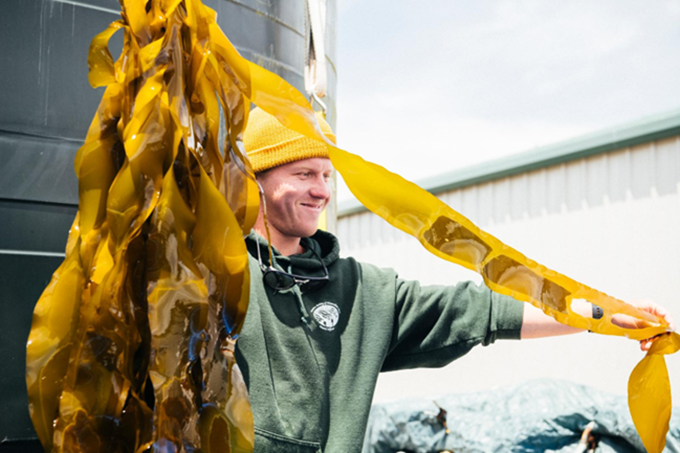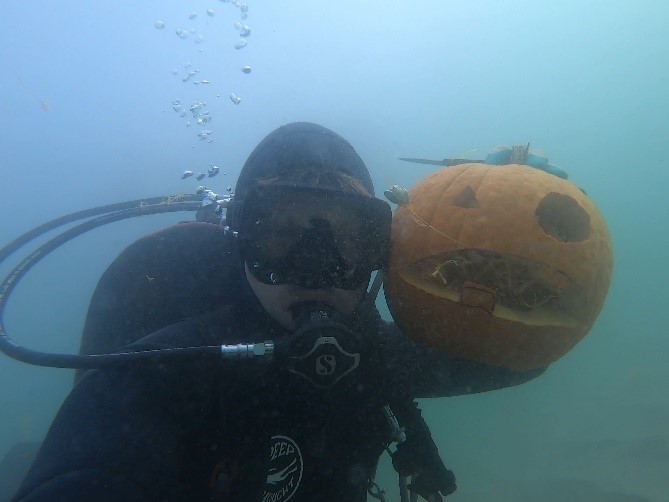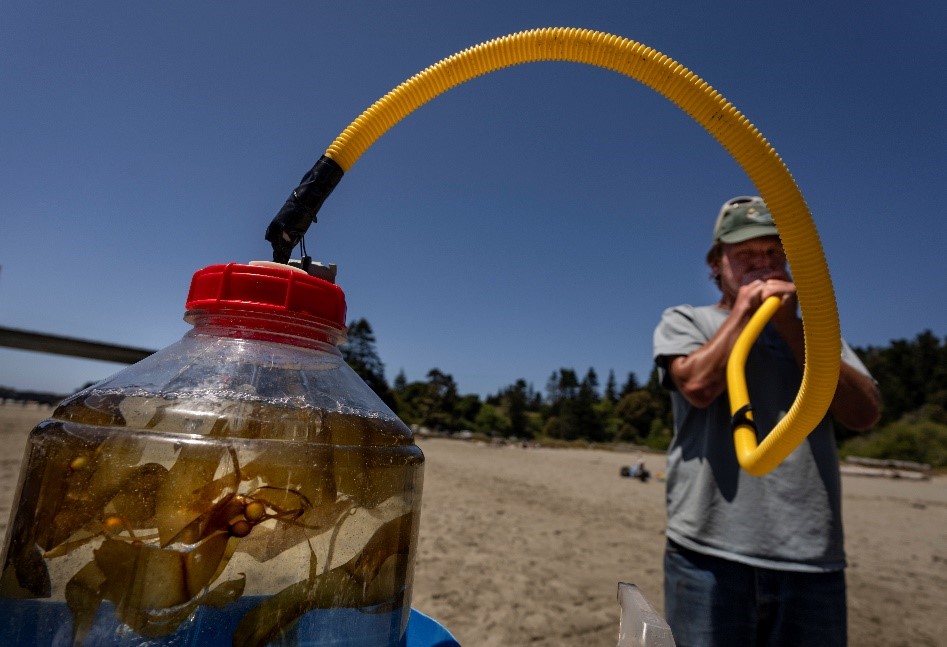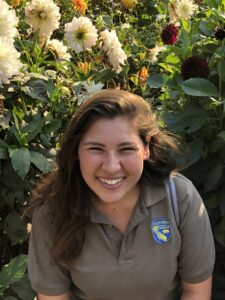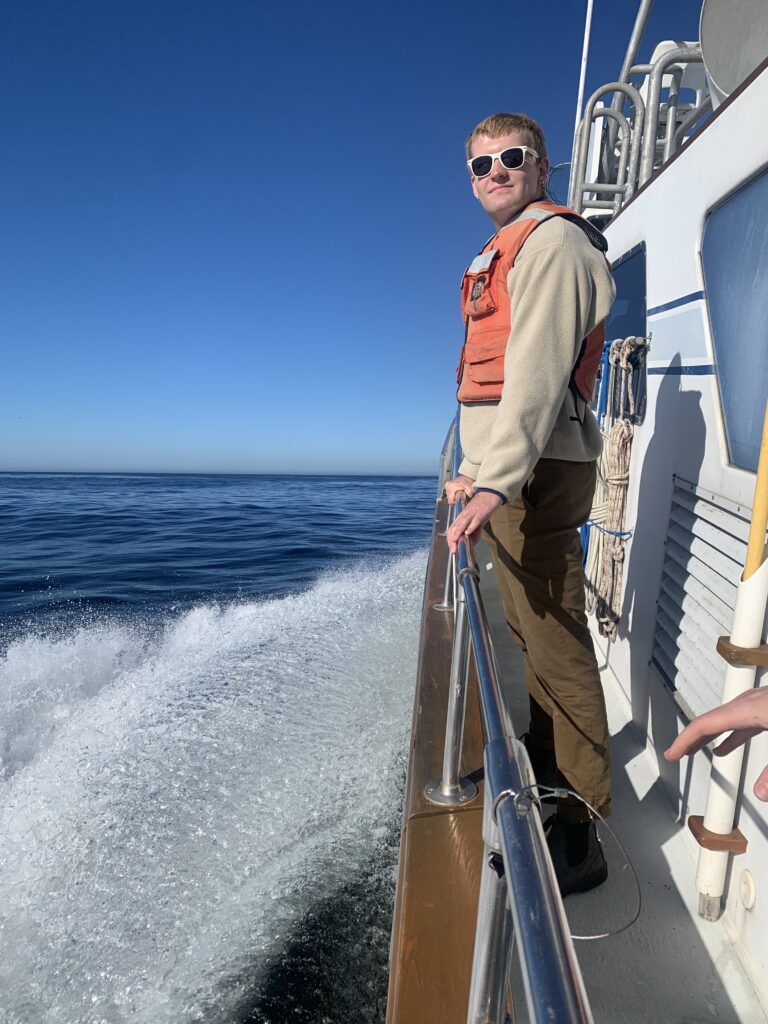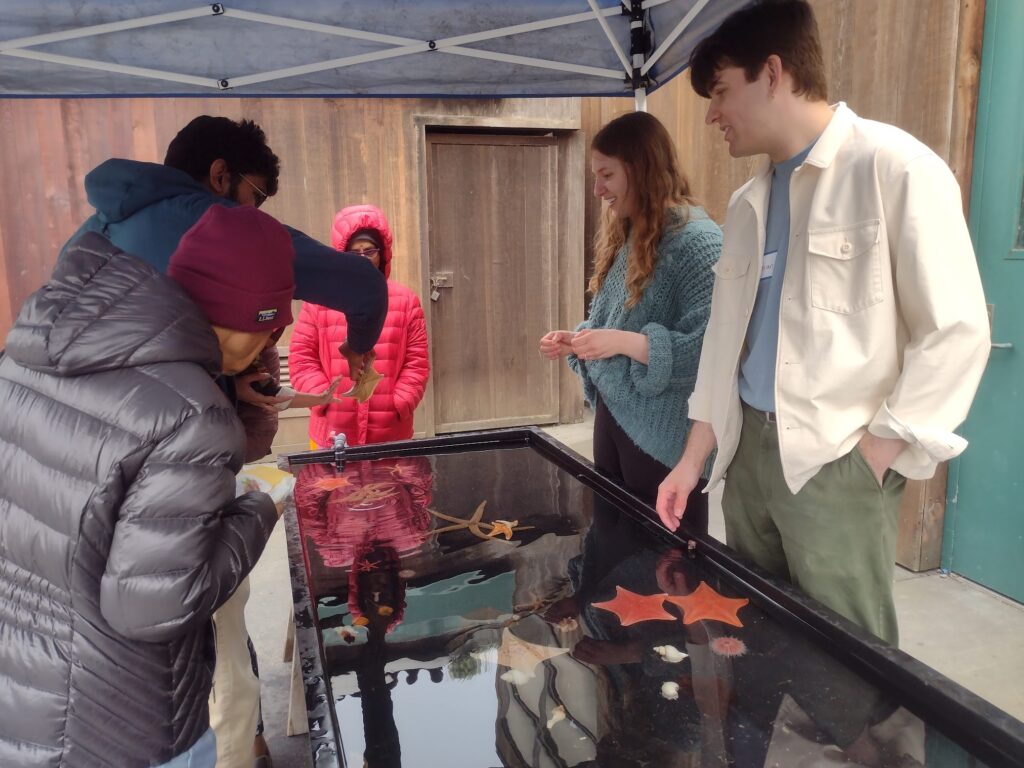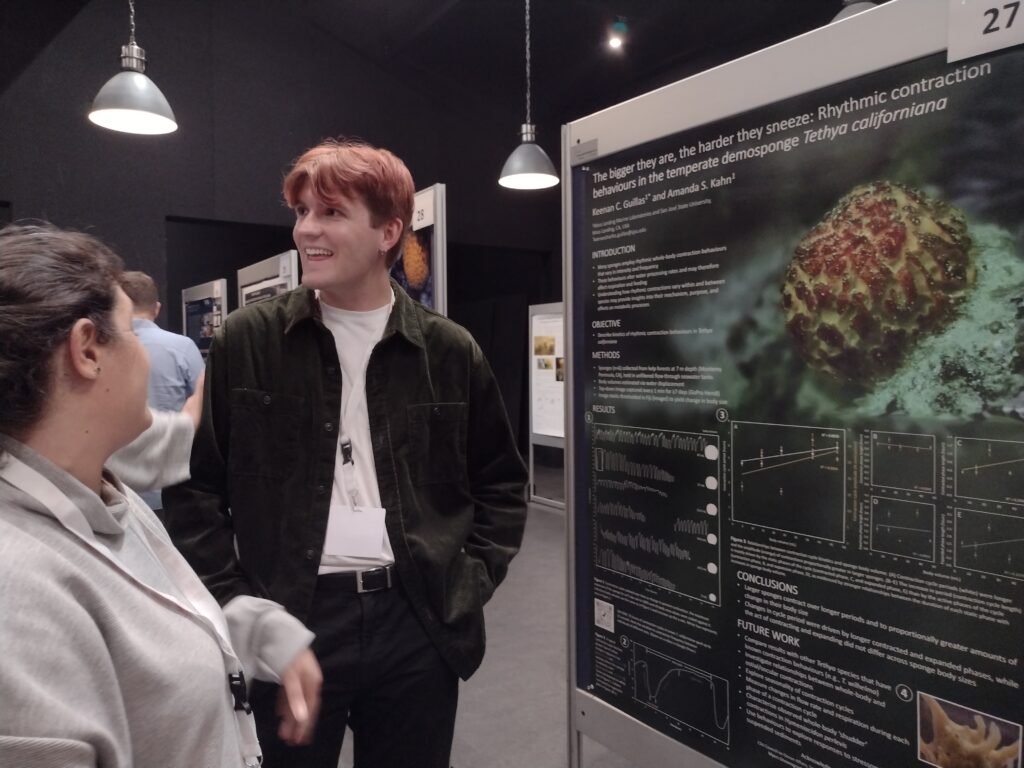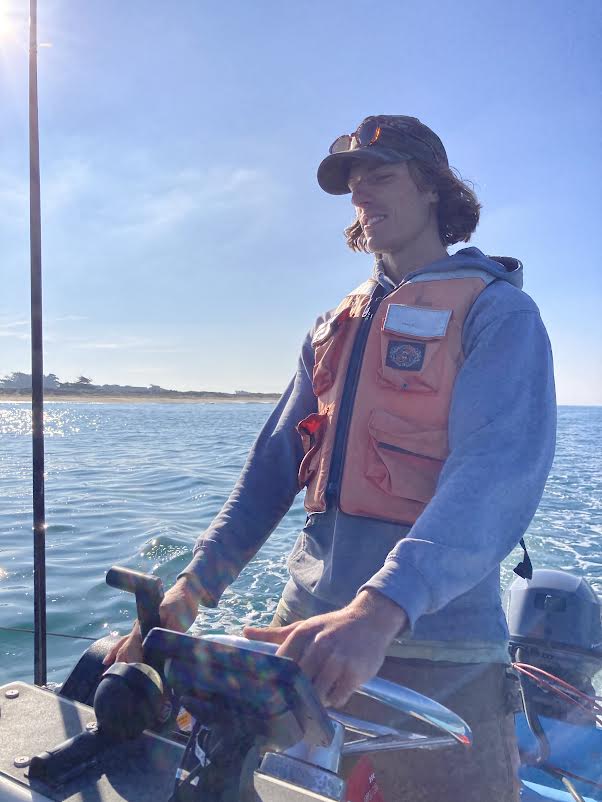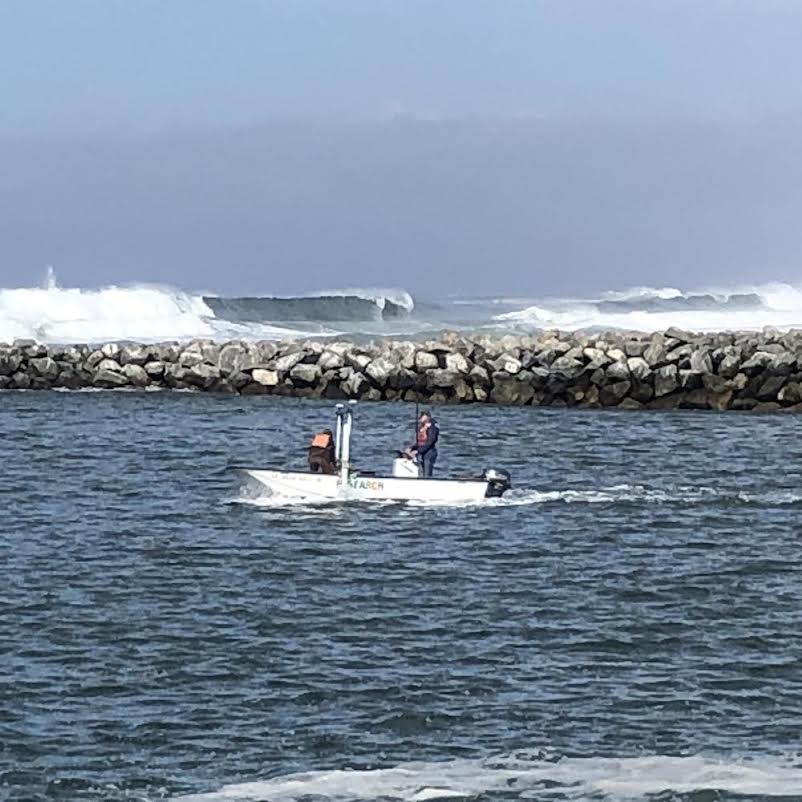"Unveiling dynamics of the Monterey Bay upwelling shadow front: Insights from Dorado AUV time series analysis"
A Thesis Defense by Kieran Claassen
Live-Stream June 9th, 2025 at 12:00 pm PST

Abstract
The fine-scale dynamics of the Monterey Bay upwelling shadow front were investigated by integrating autonomous underwater vehicle (AUV) observations with environmental DNA (eDNA) analysis. Using a clustering technique on temperature–salinity profiles from 29 missions, I identified distinct water masses that consistently reflected seasonal and spatial hydrographic structure. Phytoplankton communities, resolved via eDNA and robust Aitchison Principal Component Analysis (PCA), exhibited clear seasonal transitions—from diatom-dominated assemblages during peak upwelling to dinoflagellate-enriched communities in warm, stratified shadow waters in the fall. Case studies during sustained upwelling revealed front-associated differences in community composition, supported by ordination and statistical testing. Notably, t-tests comparing taxonomic correlation matrices show significant divergence in internal community structure between water masses, with transitional clusters exhibiting distinct co-occurrence patterns. These findings underscore the tight coupling between ecological structure and hydrographic gradients, and highlight the value of integrating physical clustering with eDNA to inform real-time ecosystem monitoring and Harmful Algal Bloom (HAB) forecasting. This work advances our understanding of upwelling systems and contributes to the development of scalable, high-resolution tools for coastal ocean management.
Bio
Originally from the Pacific Northwest, Kieran earned degrees in Environmental Science and Psychology from the University of Washington Tacoma. He got his start in marine science during an estuarine field studies course, where he discovered his love for phytoplankton while logging long hours at the microscope. From there, he dove into harmful algal bloom monitoring with Washington Sea Grant’s SoundToxins program, leading volunteer training and coordinating phytoplankton monitoring across the Salish Sea.
Since then, he’s bounced between labs, boats, and beaches—from estuarine teaching cruises to deep-ocean transects aboard U.S. GO-SHIP expeditions in the Atlantic and Indian Oceans. Kieran came to MLML with a passion for interdisciplinary science and joined the Physical Oceanography Lab to study how water masses shape biological patterns. His thesis explores the Monterey Bay upwelling shadow front using data from Dorado AUVs and eDNA. While at MLML, he interned three summers with MBARI, supported multiple labs, and got far too excited about coding—enthusiasm that eventually landed him a position with NOAA as a data analyst and developer for the Global Tropical Moored Buoy Array.
In his free time, Kieran finds grounding in the natural world—whether it’s snowboarding through fresh powder, camping under the stars, or exploring tidepools along the coast. He’s a builder at heart and always has a project in motion. When he’s not getting his hands dirty, he’s usually lost in a book, connecting with his partner, or helping his kid learn something new. He’s passionate about making science more inclusive and continues to show up as his full self in academic spaces.
